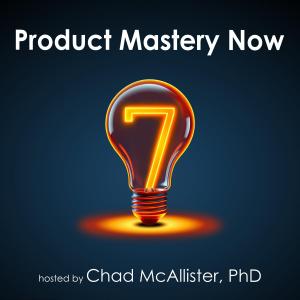Product Mastery Now for Product Managers, Leaders, and Innovators

TEI 236: The best tools for managing virtual product teams – with Jonathan Soares
Work together on product projects, rather than throwing them over the wall.
In this discussion, our guest, Jonathan Soares, shares his tips and tools for working with product teams. Jonathan is the CEO of Agency Labs, a group that creates custom software, apps, and websites. He has good experience applying tools to help product development teams work better, and we’ll find out more in just a minute.
Summary of some concepts discussed for product managers
[3:38] How do you get ready for a kickoff meeting with a virtual team?
We’ll usually receive designs, technical documents, or a high-level scope of work ahead of time. Every organization and its documentation is different. We always start by reviewing the documentation and compiling a list of questions to understand the current state and where they want to go. Asking these helps clients understand how we think and makes them feel more comfortable with us. Once we have the answers we need, we’ll develop a proposal for how we can work with the client.
[6:31] How early in the process do you like to get involved?
I like to get involved as early as possible. If someone has an idea, it’s our job to extract the requirements to figure out how to make it happen. We need to get as much information as possible, regardless of whether an organization has done any internal planning or not. We encourage product managers to have their colleagues complete an internal questionnaire so the requirements are fully articulated before we start our development work. We try to put ourselves in the client’s shoes and empathize with their skill sets and backgrounds.
[14:37] What can product managers do to be better partners with developers?
Thinking through your requirements and documenting them is a great first step. We recently received an RFP that was filled with company philosophy but only had half a page of technical requirements. We ended up with a 40-page follow-up questionnaire and an RFP process that took 6 months instead of 6 weeks.
[19:28] How do you approach the product development process?
When we deal with minimum viable products or proofs of concept, I love rapid prototypes that you can beta test in the field. This happens more often with in-house teams. We’ll go through requirements gathering and formulate our own wireframes and go right into development. We’ll get the initial product in front of users and then do the additional design work after user testing. You can save time by having well-articulated requirements up front and then beautifying it at the end.
[22:40] How do you keep a distributed team in sync?
We’ve worked with organizations that are distributed around the world. Our team all works together out of one office, and that’s part of our selling point to clients. The tools and methodologies we use are geared toward a production environment and very thoughtful workflows. Setting expectations from day one is very important, as is understanding what schedule gaps might come up based on vacations, etc. We use SmartSheets, which is a Gantt chart type of tool that allows you to track milestones. We are big fans of Slack for internal communication and Basecamp for our files and task lists. We manage projects in JIRA and store documentation on Atlassian’s wiki. Every project is tied to a JIRA ticket that has a deadline and we can track time to.
Useful links:
* Connect with John via his LinkedIn profile
* Agency Labs
Innovation Quote
“If I had asked people what they wanted, they would have said faster horses.” -attributed to Henry Ford
Thanks!
Thank you for being an Everyday Innovator and learning with me from the successes and f...






 Visit Podcast Website
Visit Podcast Website RSS Podcast Feed
RSS Podcast Feed Subscribe
Subscribe
 Add to MyCast
Add to MyCast